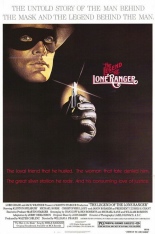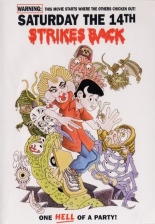
 J.T. Petty’s well-made look at the underground world of pseudo-snuff horror movies troubled me more for its final thesis than for what it actually shows onscreen. While featuring interviews with real-life filmmakers, actors and academics (including a personal hero of mine, Men, Women and Chain Saws author Carol J. Clover), the film’s dominant narrative comes from the fictional investigation into the cinematic activities of a doughy loser named Eric Rost (Eric Marcisak).
J.T. Petty’s well-made look at the underground world of pseudo-snuff horror movies troubled me more for its final thesis than for what it actually shows onscreen. While featuring interviews with real-life filmmakers, actors and academics (including a personal hero of mine, Men, Women and Chain Saws author Carol J. Clover), the film’s dominant narrative comes from the fictional investigation into the cinematic activities of a doughy loser named Eric Rost (Eric Marcisak).
As the man behind the titular S&Man (pronounced “sandman”) series, which consists of him stalking attractive women on camera before killing them onscreen, Eric is reluctant to give away his filmmaking methods — afraid that doing so will undermine his reputation and mystique. Unable to contact any of the women who have appeared in the films, Petty (playing himself) is faced with the very real possibility that Eric’s product is the genuine article.
 It’s no easy task to combine the real and the fictional as well as Petty does here, but ultimately, I found myself troubled by the conclusions he reaches. In his final narration, he tells us that we watch horror movies knowing that the violence is fake, while wishing it were real — which, in my case, simply isn’t true.
It’s no easy task to combine the real and the fictional as well as Petty does here, but ultimately, I found myself troubled by the conclusions he reaches. In his final narration, he tells us that we watch horror movies knowing that the violence is fake, while wishing it were real — which, in my case, simply isn’t true.
The fact is, I am generally indifferent to the violence in horror movies — I enjoy them for other reasons I don’t have the time or space to go into — and I am able to watch them without self-inflicting psychic trauma because I am able to take comfort in the knowledge that what I am seeing isn’t real. To suggest otherwise is to indict myself with a cultural crime I have not committed.
The other problem with Petty’s thesis is that in order to fully exploit it, he ruins the film’s delicate balance between journalism and fiction. It simple isn’t credible that a conscionable documentarian wouldn’t, at a certain point, take what they have learned about Eric’s activities and report them to the police. And while Petty’s inaction is meant to support his apparent contention that there is little difference between real and staged violence, it instead only works to prove how ultimately misguided that contention is. —Allan Mott


 There are some cinematic disasters that live on despite their failure, achieving a dubious kind of legend that actually serves them better than if they had succeeded.
There are some cinematic disasters that live on despite their failure, achieving a dubious kind of legend that actually serves them better than if they had succeeded.  Returning to the movie three decades later, I feared the worst, especially knowing its star discovery — the improbably named Klinton Spilsbury — was a male model who never acted again after having all of his dialogue replaced by James Keach (who occasionally sounds recorded in an echo chamber), so I was pleasantly surprised by how entertaining the experience of watching it turned out to be.
Returning to the movie three decades later, I feared the worst, especially knowing its star discovery — the improbably named Klinton Spilsbury — was a male model who never acted again after having all of his dialogue replaced by James Keach (who occasionally sounds recorded in an echo chamber), so I was pleasantly surprised by how entertaining the experience of watching it turned out to be.


 Written and directed by Howard R. Cohen, the auteur also responsible for the original
Written and directed by Howard R. Cohen, the auteur also responsible for the original 

 In reality, the girls would have been torn apart by the titular location within minutes of their arrival, but Times Square is a fairy tale. Viewed as such, it is a well-made and moving one, thanks especially to a stand-out performance by Johnson (who should have gone on to much bigger things, instead of her only other film,
In reality, the girls would have been torn apart by the titular location within minutes of their arrival, but Times Square is a fairy tale. Viewed as such, it is a well-made and moving one, thanks especially to a stand-out performance by Johnson (who should have gone on to much bigger things, instead of her only other film,